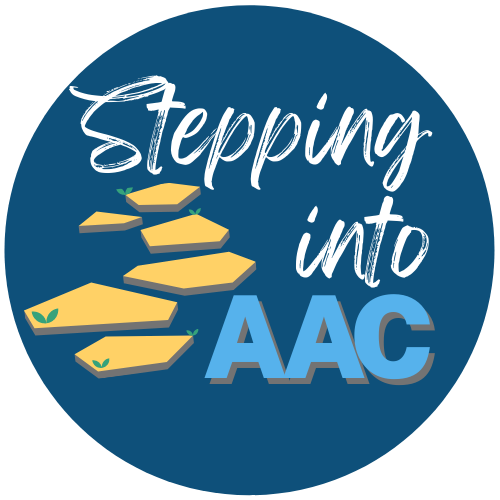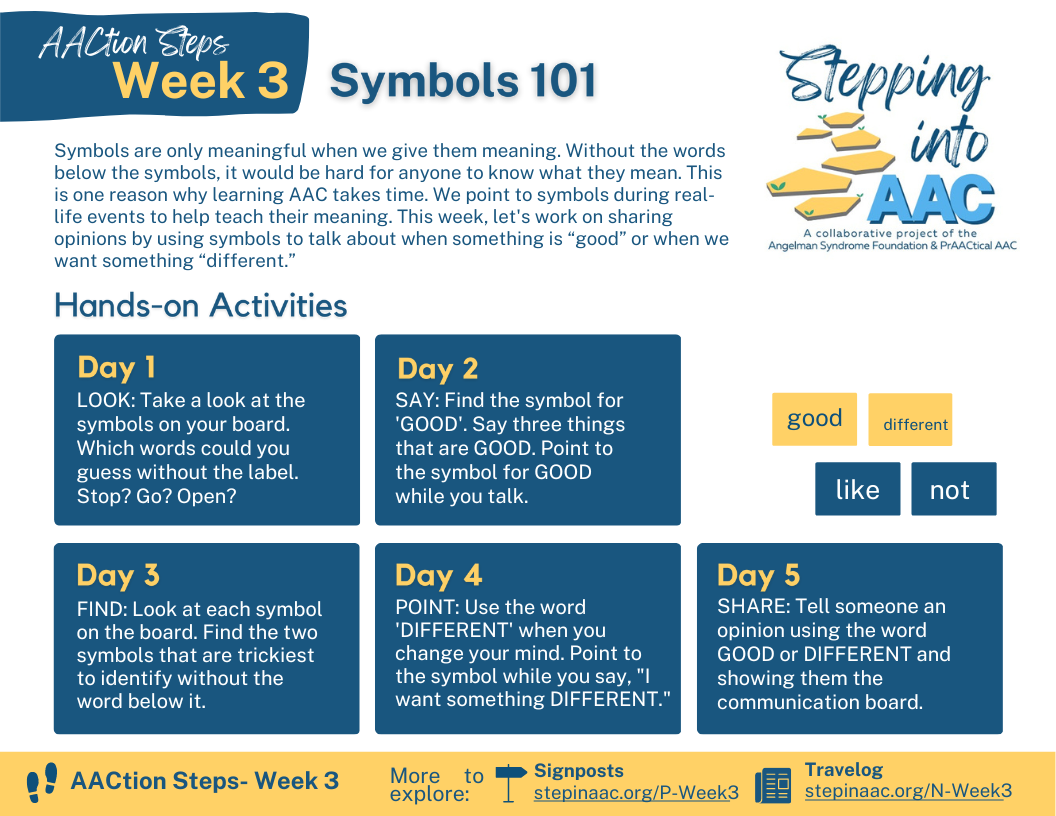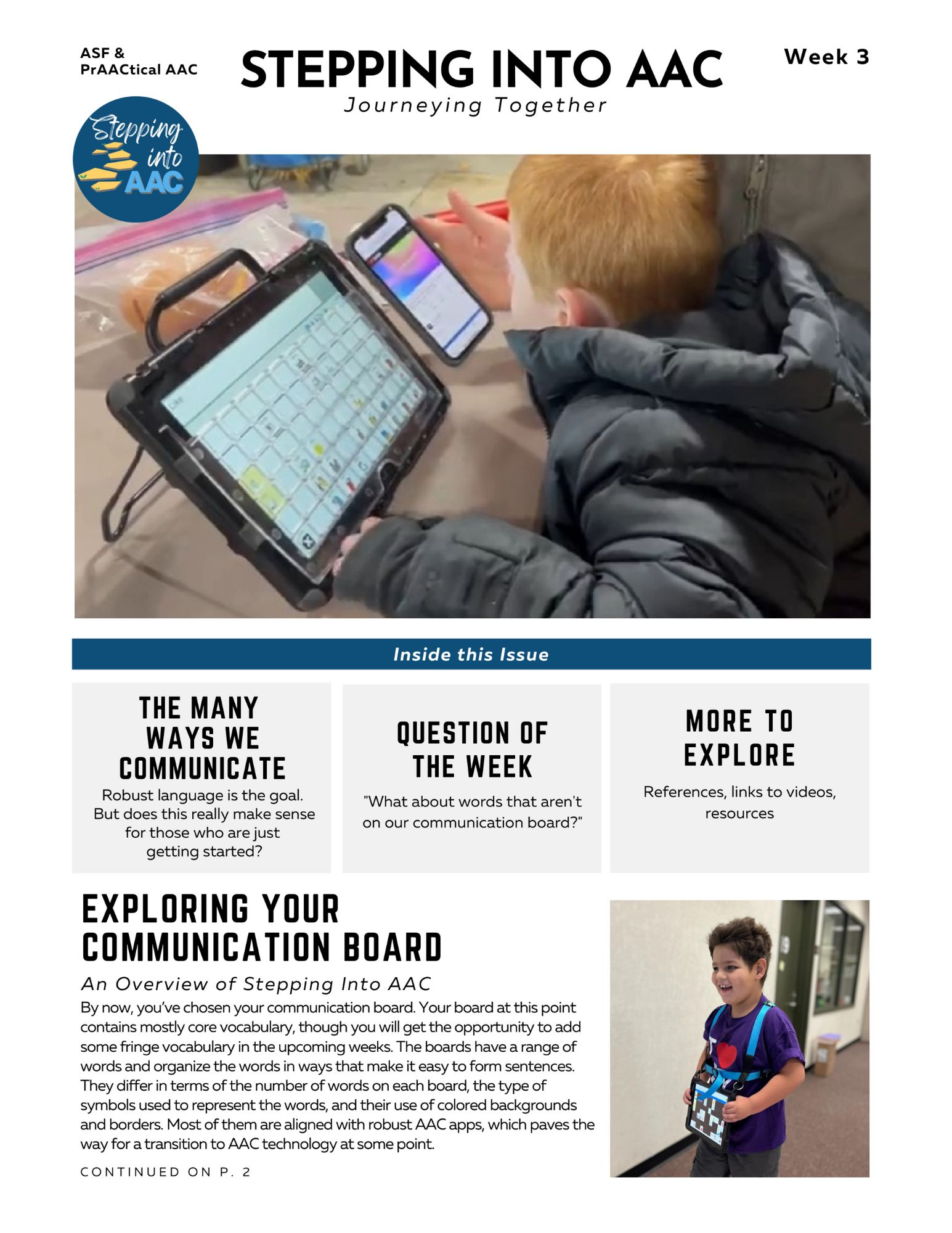
About This Week
Welcome to Week 3 of your Stepping into AAC journey! This week will get us thinking about how words are symbolized, what kinds of words should be on AAC systems, and other foundational information.
We will explore the following concepts this week:
- Why Use Symbols for AAC? Gain an understanding of symbolic communication and issues related to using picture symbols in AAC systems.
- Balancing Core and Fringe Vocabulary: Learn about different types of words that AAC learners need access to and the role of each.
- Navigating AAC: Build your knowledge of the logic in the design of communication boards, AAC apps, and speech-generating devices.

AACtion Steps

Week 3 AACtion Steps

Signposts
Why Use Symbols for AAC?
This video addresses the misconception that symbols used in augmentative and alternative communication (AAC) are learned in a hierarchical manner. It emphasizes that symbols are learned through consistent and meaningful use. The role and limitation of real objects and photos in AAC learning compared to symbol-based systems are discussed. The importance of using well-developed symbol sets to build language and language learning opportunities that will support long-term language growth is discussed.
Link to References
Gayl Porter & Linda Burkhart, 2010 – Limitations of Using a Representational Hierarchy
Balancing Core & Fringe Words in AAC
Balancing core and fringe words is an important part of AAC (Augmentative and Alternative Communication) implementation. Core words are high-frequency and versatile, while fringe words add specificity and richness. Combining core and fringe words maximizes communication possibilities. While core is relevant across life’s activities, it’s essential to include important fringe words in AAC systems to enhance learning and cater to individual interests.
Get the Handout
Navigating AAC-Teaching Tips
This video shares teaching tips for learning how to navigate and use AAC (Augmentative and Alternative Communication) devices effectively. Various strategies are discussed to help communication partners be more confident and effective in using and teaching AAC.
Navigating AAC- 3 Things to Know
This video discusses three important concepts for understanding the design of Augmentative and Alternative Communication (AAC) systems. It emphasizes the importance of as large a grid size as possible, capitalizing on motor planning to build automaticity, and maintaining system organization when customizing.
Get the Handout

Travelog

Week 3 Travelog
Print the Week
Want all of the resources shared in this week’s Stepping into AAC? You can download the entire digital bundle by clicking the download button below.
